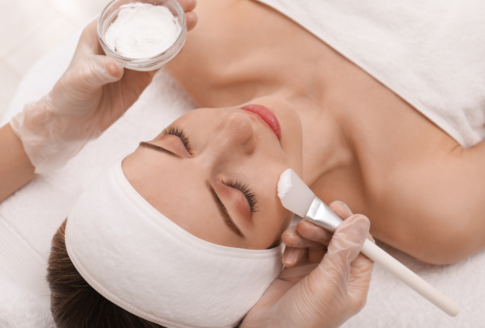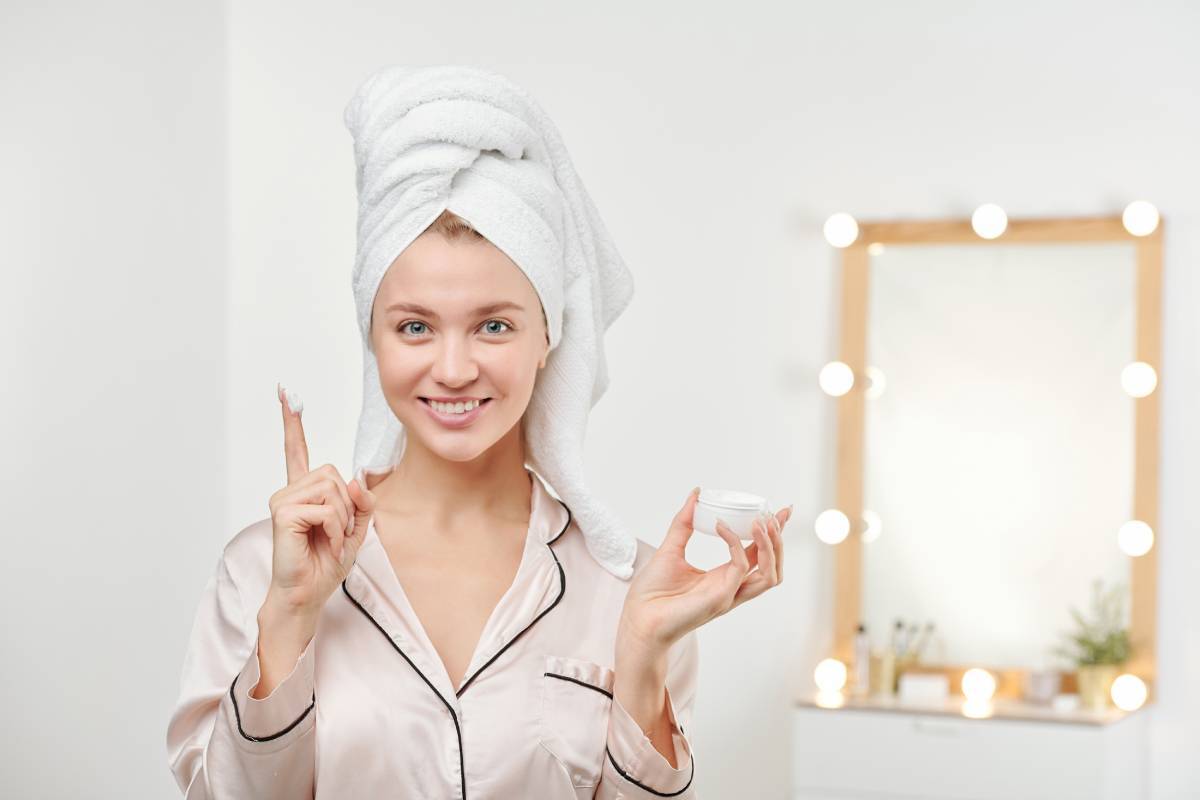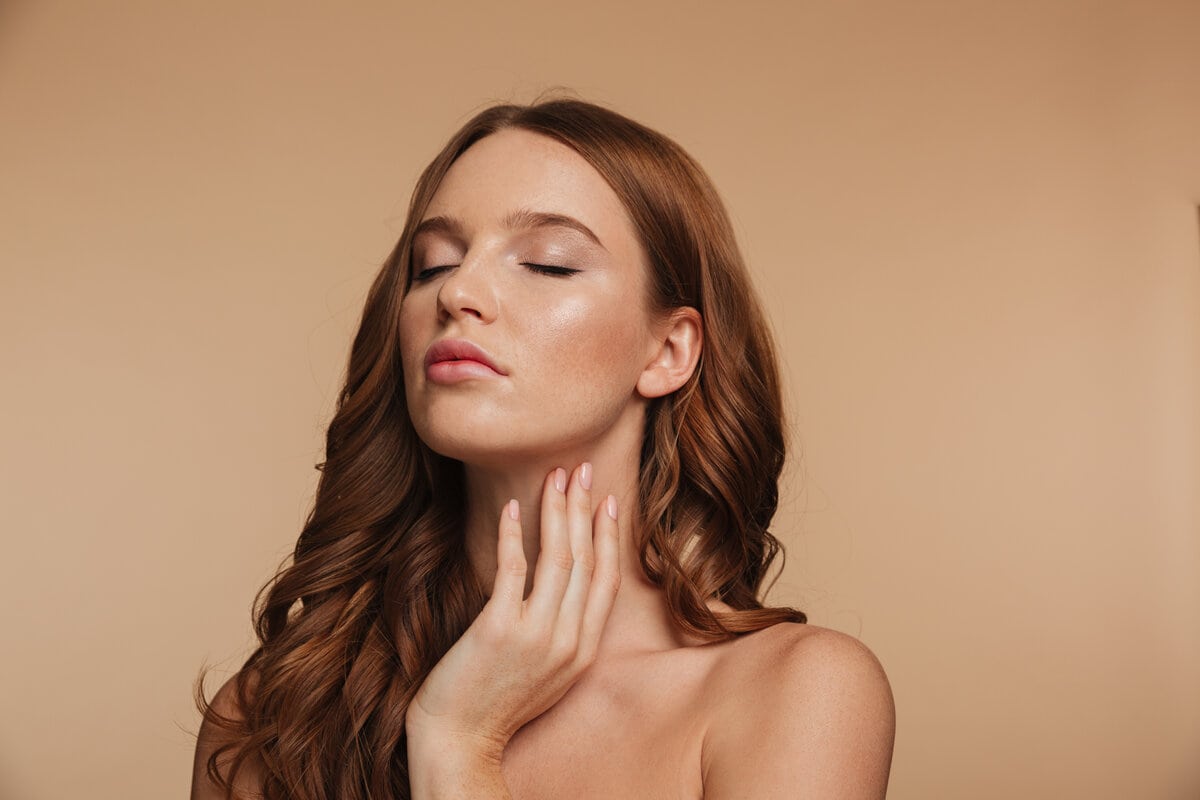Body exfoliation guide

Peeling is the process of removing dead skin cells from its surface. When there are dead cells in the outer layer of the skin, in combination with dirt, they may clog the pores of the skin, while blackheads and dry skin may also appear.
Exfoliation occurs naturally but we do not realize it. The cells of the stratum corneum of the epidermis (the most superficial) are detached and replaced by self-renewal as the cells in the lower layer move upwards. This process takes about four weeks but with aging the metabolism slows down and the regeneration time of the stratum corneum is extended.
If the process of natural exfoliation is reduced, poor tone, abnormal skin thickness, roughness, dryness and loss of youthful appearance may occur. In this case, cosmetic exfoliation methods can remove dead skin which thus acquires a more youthful appearance, softness, elasticity and uniform texture. It also creates a smoother base for makeup while another benefit is that topical treatments like e.g. hydration, have a better effect because they penetrate more into the skin.
Table of Contents
What are the types of exfoliating products?
There are two types of exfoliating products: mechanical and chemical. Mild methods can be done at home but successful exfoliation depends on the right choice of products [1]. If the exfoliation is not done properly, it could do more harm than good [2].
What is mechanical exfoliation?
Mechanical exfoliation products remove dead cells through rubbing. Mechanical exfoliation is done with a brush, sponge or a scrub that is applied by rubbing on the skin. It can also be achieved with devices comprising small exfoliating granules of ground grains, powdered shells or other plant materials. The process relaxes the cells of the stratum corneum.
Gentle rubbing is enough to rid you of dead cells. It is important not to rub too hard because otherwise you can remove too many cells reaching the level of living cells. Mechanical exfoliation also includes microdermabrasion machines used in beauty salons.
With a body scrub, rub in circular motions for 30 seconds and then rinse with lukewarm water. Gently massage all over your body from the chest to the soles of the feet. A body exfoliating product may have coarser grains than that of the face. After exfoliation, moisturize your skin well.
On your feet, you can exfoliate before shaving. Start with a foot bath with essential oils, dipping your feet in water for about 20 minutes. With a pumice stone or electric file, gently rub the heels, removing dead cells. If your feet have calluses and calluses that you can not deal with exfoliation, then calluses and calluses are the ideal solution.
What is chemical exfoliation?
Chemical exfoliation products contain chemicals that weaken the connections of the cells and so they are easily removed with water. Chemical exfoliation has long been used to treat a variety of cosmetic and medical skin conditions.
The process may involve the application of an acid, enzymes or other substances. In addition to the chemicals used by doctors for medium and deep peels, superficial ones are sold without a prescription (eg 3-10% glycolic acid and mild acids derived from fruit). Mild fruit acids (such as citric and mandelic) are used on skin that is thin or has a significant degree of photoaging and atrophy.
Note that dozens of products are sold but this does not mean that everything is safe and effective, so you should pay attention to your purchases, preferring products from well-known, reputable companies. Do not buy strong exfoliating products, but those that have a low concentration of acids – not more than 10% glycolic acid or 2% salicylic acid.
The exfoliation method depends on the skin type. The basic types are: a) sensitive skin (it often burns in the sun or you feel it “bites” you when you put cosmetics), b) normal (it is clean, without signs of sensitivity), c) dry (it is hard or flaky), d ) oily (shines from the fat that accumulates on it), and e) combination skin (in other places it is dry and in others oily).
To add a chemical exfoliator to your routine, make sure you do a test first. Use the product according to the instructions on a small area of the skin and wait 12-24 hours to see if any unexpected reactions occur. Stop exfoliating if you notice that your skin is red or has other irritations. Note that the exfoliation you do at home is for simple aesthetic reasons. If you need deeper exfoliation [2] you should definitely consult an experienced dermatologist.
Contraindications and possible side effects
In general, you can exfoliate both your face and body once a week but it depends on how sensitive your skin is. The more aggressive the treatment, the thinner it should be applied. If you exfoliate more often than you should, your skin may become red and irritated.
You need some of the dead cells of the outer layer because they provide protection from dehydration and irritants. If you overdo it with exfoliation, you lose this protection and your skin becomes red, irritated, vulnerable to pollutants and loses its natural moisture. If you have very sensitive skin, exfoliate once every 10 days. Note that for ages over 45 the skin is thinner.
If you have any skin condition, consult a dermatologist. There are skin conditions that make the procedure prohibitive. When exfoliation is done with the wrong product or by people who should avoid it, the consequence may be a worsening of the skin condition with exacerbation e.g. of acne or the appearance of redness. Some skin conditions such as herpes, termite mites and warts can be aggravated because these conditions often cause fluid-filled lumps that can open and become infected.
People who have inflammatory acne, which is characterized by cysts, small red pimples and pimples with pus, should consult a dermatologist before choosing a method of exfoliation, because the most aggressive chemical or mechanical treatments can worsen the condition. The same goes for people with rosacea, in which exfoliation can intensify the redness of the face.
Do not exfoliate skin that has cuts, sunburn or other damage. Do not rub scrubs or chemical exfoliants too much on your skin. Note that creams with retinoids, make the skin more sensitive and if combined with exfoliating products can cause dry skin or exacerbation of acne.
Keep in mind that a deeper peel can have more significant side effects for it and requires a well-trained and experienced doctor. Deeper peeling can make the treated skin darker or lighter, and if not done properly can lead to infection or permanent scarring.
At Vita4you.gr you will find a wide variety of products for body exfoliation.
References
Disclaimer
The content of this blogspot is not and can not be considered as medical advice, diagnosis or treatment. All information is provided to readers solely for informational purposes. There is no intention to substitute this content for personalized medical advice, diagnosis, prognosis or treatment.








Leave a comment